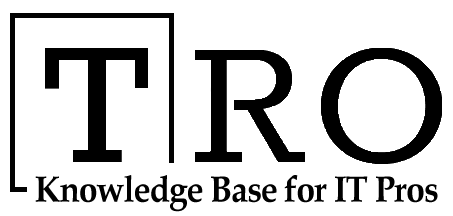Guide to Improve Employee Digital Experience for 2021
Introduction
Digitalization has made user experience (UX) a priority for all companies. This is because UX fulfills user’s needs and provides experiences to keep them loyal to the brand.
Hence, as customers, we find complex services and great experiences made simple by digital technology. For instance, we can book vacations, stream a video, or buy a product online with just a few taps on the screen.
Similar to UX, digital employee experience (DEX) has become the need of the hour. While organizations are focused on UX, digital workplaces have increased the importance of employee experience.
When we step into an organization, things as an employee are very different. We often see employees struggle to effectively connect with colleagues or share the information needed.
They sometimes have to maneuver through complex internal organizational structures, systems, and processes with no straightforward way to get support.
Contents
Why Does This Matter?
Digital experience matters because a bad digital workforce experience can cause frustration leading to an overall negative workforce experience. This can then impact productivity and engagement.
The good news is organizations can improve their digital employee experience. They can do this by making efforts to offer the best experiences possible to their employees that are similar to their customers.
Why does Digital Employee Experience Matter?
In the last few years, we have seen the growth of remote working and digital workplaces. The major driver is the Coronavirus pandemic and the simplicity it brings to the work environment.
Digital employee experience management at the workplace aligns and simplifies the complex undertaking of employees.
A good employee experience has the power to enhance overall engagement and make its mark pretty quickly. A better digital experience may benefit employers by:
- Improving workers satisfaction
- Increasing longevity and retention
- Increasing productivity
- Streamlining workplace
- Bringing more efficiency to business processes
In this information age, there is no time barrier to the successful consumption of information. If at the workplace, processes and tasks are designed with long runways then they become time-consuming and cumbersome.
Here, we should ask a simple question: if employees don’t have to wait for information at home, then why should they have to wait at work?
What are the Benefits of Improving the Digital Workplace Experience?

We know why digital employee experience matters. Now, it’s time to see how it can benefit you. Let’s explore its benefits:
-
Satisfied and Happy Workers:
Many studies have pointed out that employees who enjoy their work experience – digital or otherwise – are more satisfied. This consequence affects loyalty, longevity, and efficiency.
-
Greater Productivity:
Good digital employee experiences keep employees engaged which in turn makes them more proficient, skilled, and productive.
-
Less Frustration with Digital Tools:
better experiences with tools and technologies become less frustrating. This positive impact their work life, from their duties to interactions with coworkers.
-
Improves Profits:
Good digital employee experiences can impact an organization’s bottom line positively. All of the above-stated reasons such as heightened productivity to increased retention help employers save and make money.
There is no shortage of reasons as to why an organization should consider investing in the digital employee experience.
How to Improve Digital Employee Experience at your Workplace?
We now know the importance of digital employee experience. Let’s see how you can start prioritizing and taking steps for improving digital employee experience management.
1. Set your DEX Goals
If you are looking to make the employee experience a priority for your organization, your first step is to determine related organizational goals.
Here, you should ask yourself questions like:
- What drives your current approach to DEX?
- What is it you’re trying to accomplish as a business?
- How can those goals help you design a great digital employee experience?
You might find that the goals are difficult and not directly aligned, but the goals are always there. You can also take help of the organization’s business objectives such as scalability or Efficiency or Growth or Cost savings.
Now, use them to find modern tools and technology that are efficient, usable, user-friendly, and productive. Next, build your business case by thinking of the metrics this will impact the digital employee experience.
At the end of the day, initiatives that are focused on employee experience have the opportunity to provide a ripple effect. You will be able to easily save money through reduced turnover, increased engagement, higher productivity, and efficiency gains.
2. Plan your Approach to DEX
You can plan digital employee experience in a similar way you plan user experience that is by mapping out the employee journey.
For instance, you can ask questions such as:
- How can you anticipate what employees might need?
- When are your performance cycles?
Technologies that had provided that engagement between the organization and employees previously?
You can also try to think of the employee’s digital experience journey as a collection of engagement points. This will give you a perspective on how you can make them more impactful, seamless, and consistent. This will help you deliver a great digital employee experience without dehumanizing it.
Once you mapping an employee’s journey and determine an engagement barrier, identify what needs to change. Also, be sure to consider multiple channels and tools for better engagement.
Lastly, make sure to take into account your workforce diversity and include opportunities to engage all employees.
3. Take Action
We know it’s not enough to just identify a problem; you need to think about how to address it. Here, you need to decide in which direction you want to take your DEX and then find the right technologies.
You need to be specific and think about which part of the journey you are trying to impact. If you don’t know what you’re trying to do then the system will have a generic experience that will not support your employees.
A Few Tips:
- It’s best to design a system that specifically satisfies your requirements and attributes to specific engagement points.
- Consider technologies that cater to the goals of your organization instead of one-size-fits-all enterprise solutions.
- Take your company culture into account and make sure your vendor addresses your values and make sure their solution fits.
- Review the needs of your entire workforce: partially remote versus fully remote or mature versus early career.
4. Measure your DEX
Similar to any business process, DEX also needs to be measured. So, take the help of tools that will enable your organization to track the data you need to measure and assess.
Now, you need to make sure that every engagement point is tracked by metric or KPI. The metric will show you the trends and help you test your hypotheses.
After collecting metrics, you will be able to answer questions such as:
- Are you having an impact?
- Are processes more streamlined and simpler?
- Are employees more engaged?
This will give you great insights. Now, if you find employees are less engaged by the process it may be because the design doesn’t feel right for them. Then you can take action by reviewing your design and including humanizing elements.
Now, there are a few things to keep in mind while drawing insights:
- Measure how long an employee takes to complete a process. Also, you need to measure how soon an employee engages after a process kicks off. This will indicate their willingness or excitement while interacting with the system.
- You need to monitor the adoption of the tools as it will indicate how often and effectively, they use them. If you see high adoption and utilization that means it has become a part of your work culture.
Conclusion:
After user’s experience, digitalization at the workplace has increased the importance of digital employee experience. In this blog, we have covered the definition of digital employee experience, why it matters, how can it benefit employers, and how you can improve it in your organization.
Author Bio:
Shreeya Chourasia is an experienced B2B marketing/tech content writer, who is diligently committed for growing your online presence. Her writing doesn’t merely direct the audience to take action, rather it explains how to take action for promising outcomes.

